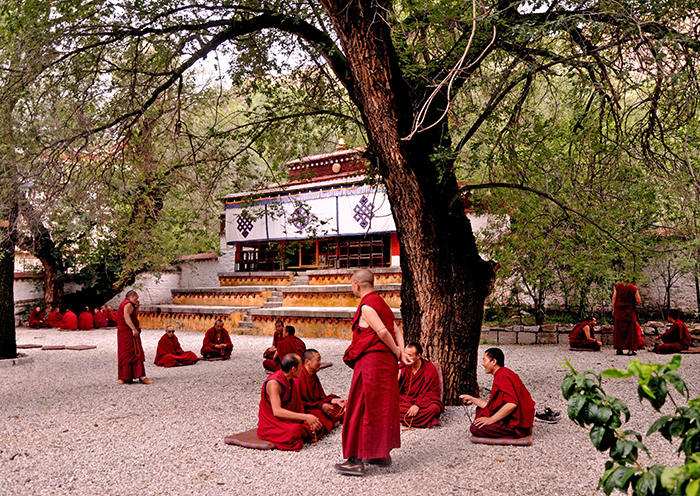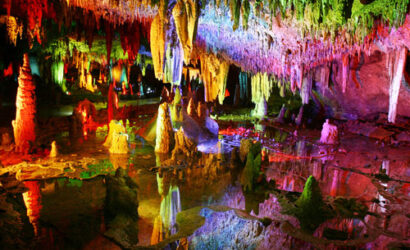【Potala Palace】(about 1 hour tour)
Initially built in 641 AD and listed as a world heritage site in 1994, the Potala Palace is the most popular tourist attraction in Tibet. The halls, murals, statues and mountain views will make you shocked even if you are not a Buddhist.
【Ticketing tips for the Potala Palace】:
1. The Potala Palace needs real-name online ticketing and valid document (such as ID card, household registration book or passport) is required to make the reservation. After the reservation is successful, the ticket cannot be re-booked within 7 days from the day of the visit. If you can not enter the Potala Palace due to the wrong documents provided by yourself, we do not bear any responsibility and consequences.Therefore, it is important to take the valid documents. If the name or ID number or do cument does not match the information provided before, you will not be able to enter the Potala Palace. Please note the ticket fee has actually been incurred and cannot be refunded.
2. The visiting time of the Potala Palace is randomly issued by the Potala Palace Management Office and it can not designate the visiting time. Please note the actual visiting route sequences may be different from the provided one.
3. In peak season, there has restrictions in visiting the Potala Palace and each travel agency has only a limited number of group bookings every day. In order to ensure the group tour visiting, we solve the problem through different channels. Due to the special requirements for ticket purchases in different channels, you are requested to obey tour guide arrangement. The normal arrangements are as below:
1)The group tour may be divided into multiple small groups (tourists who book together might be divided, and they join with other small group to visit the Potala Palace).
2)Each small group is divided into different times/dates to visit.
3)Each small group follows the different guide to visit.
4)Sometimes due to some special tickets, the tour guide cannot be with the tour to enter the Potala Palace.
5)The group rate of children does not include the Potala Palace entrance fee. Children under the height of 1.2 meters (excluding) can visit for free with adults. Children over the height of 1.2 meters should inform us when confirming the tour and paying the Potala Palace entrance fee and related service fee so we can make an appointment to purchase tickets in advance. If visitors do not inform in advance, children may not be able to enter the palace with adults and can only wait in the tourist vehicle.
【Traditional Handicraft Art center】
This day will take you to fully immerse yourself in experience traditional Tibetan handcraft art center, including making Tibetan incense, Tibetan calligraphy-the methods behind Tibetan calligraphy and the secrets of block printing.
【Warm tips for visiting the Potala Palace and the Jokhang Temple】:
1) Both the Potala Palace and the Jokhang Temple need real-name online ticketing and valid document (such as ID card, household registration book or passport) ,masks and health green code on “Zangyitong” mini programme and nucleic acid report are required. You need to obey tour guide arrangement and visit at the designate time.
2) You should respect the rules while visiting. Do not wear hats, wear revealing clothes or step on thresholds as these actions violate local customs.
3) Do not make loud noise, chase, climb, lie down, spit, throw debris, touch cultural relic in the hall. It is forbidden to photography, taking of videos and touching cultural relics and mural in the Potala Palace, the Jokhang Temple and other temples in Tibet. Do not bring liquid drinks into the temple or palace and do not smoke or use bright fires.
4) There are many steps at the Potala Palace, so it’s better to take it slowly to avoid possible altitude discomfort. The hall is relatively cold, even in summer, it is recommended to prepare a coat. The limitation of visiting time is one hour and the tour guide is not allowed to stay and explain loudly in the hall for long time, so the tour guide can only explain outside. You are requested to travel civilized and abide by the regulations of cultural relics protection units.
5) The buildings of the Potala Palace and Jokhang Temple are ancient, with narrow channels and many wooden stairs. In addition, too many visitors might cause hidden dangers. Therefore, you shall leave as soon as possible after visiting. When going up and down the stairs, you should pay attention and do not crowd.
Meals: Breakfast
Accommodation: Lhasa














